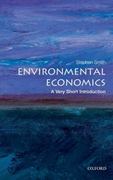Question
Consider a more realistic modification of the Solow model in which the savings rate is no longer constant/exogenous. Suppose that we have a classical production
Consider a more realistic modification of the Solow model in which the savings rate is no longer constant/exogenous.
Suppose that we have a classical production function with constant returns to scale, population growth, and labor-augmenting technological progress Yt = F(Kt,EtLt). Suppose that, as in the classical model, both labor and capital are paid their marginal products, i.e. rt = MPKt and wt = MPLt. Capital depreciates at , the population growth rate is n, and the growth rate of technology is g. However, unlike the Solow model, consumption and investment are not constant fractions of output. Instead suppose that all capital income is saved/invested and all labor income is consumed. (Intuition: households use their labor income to cover monthly expenses, while they keep reinvesting their stock market portfolio returns only).
(a) Write down the equations for output, investment, consumption, and the capital accumulation equation.
(b) Show that the growth rate of capital (total, not per worker) is always equal to the return on capital (MPK ).
Define the per effective worker variables as: yt = Yt/(Et)(Lt) , ct = Ct/(Et)(Lt) , it = It/(Et)(Lt) , and kt = Kt/(Et)(Lt)
(c) Transform all equations in per effective worker form. Hint: MPKt =f(kt) and MPLt =Et[f(kt)f(kt)kt].
(d) Use the capital accumulation equation from (b) to find an equation that solves for the steady-state level of capital k.
(e) Prove that consumption per worker is always maximized in the steady state, i.e. show that this method of allocating consumption and investment always leads to the golden rule steady state.
Step by Step Solution
There are 3 Steps involved in it
Step: 1

Get Instant Access to Expert-Tailored Solutions
See step-by-step solutions with expert insights and AI powered tools for academic success
Step: 2

Step: 3

Ace Your Homework with AI
Get the answers you need in no time with our AI-driven, step-by-step assistance
Get Started


